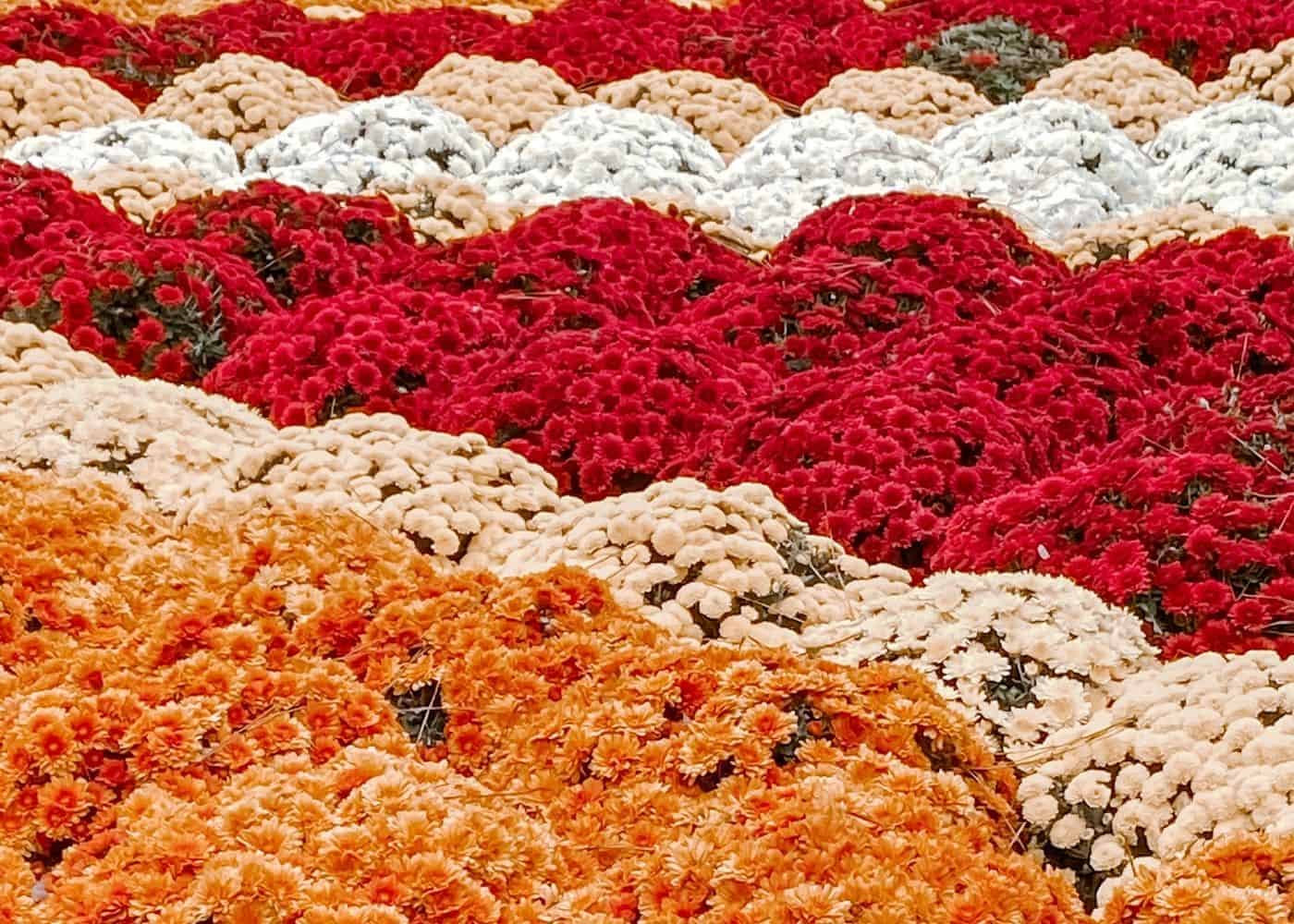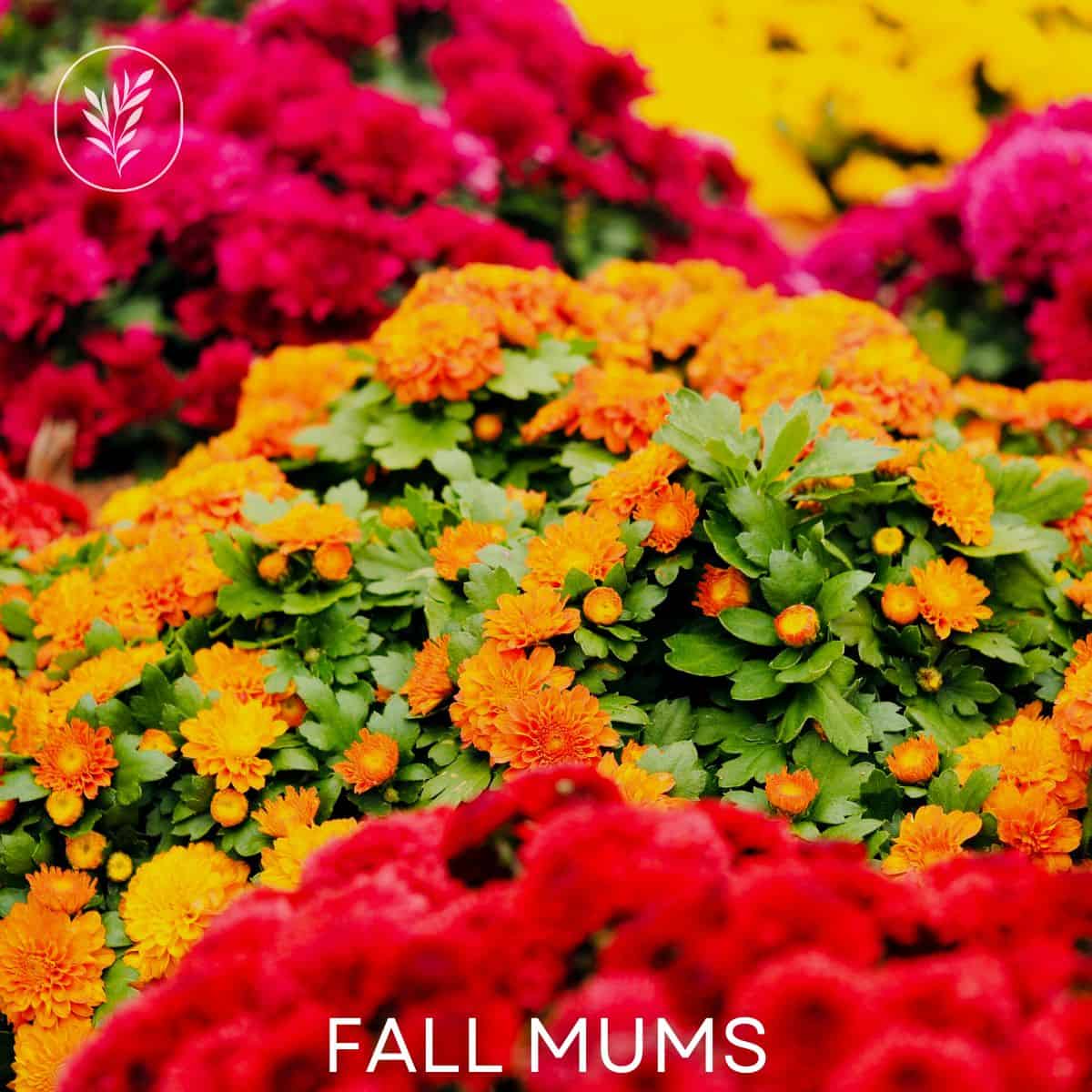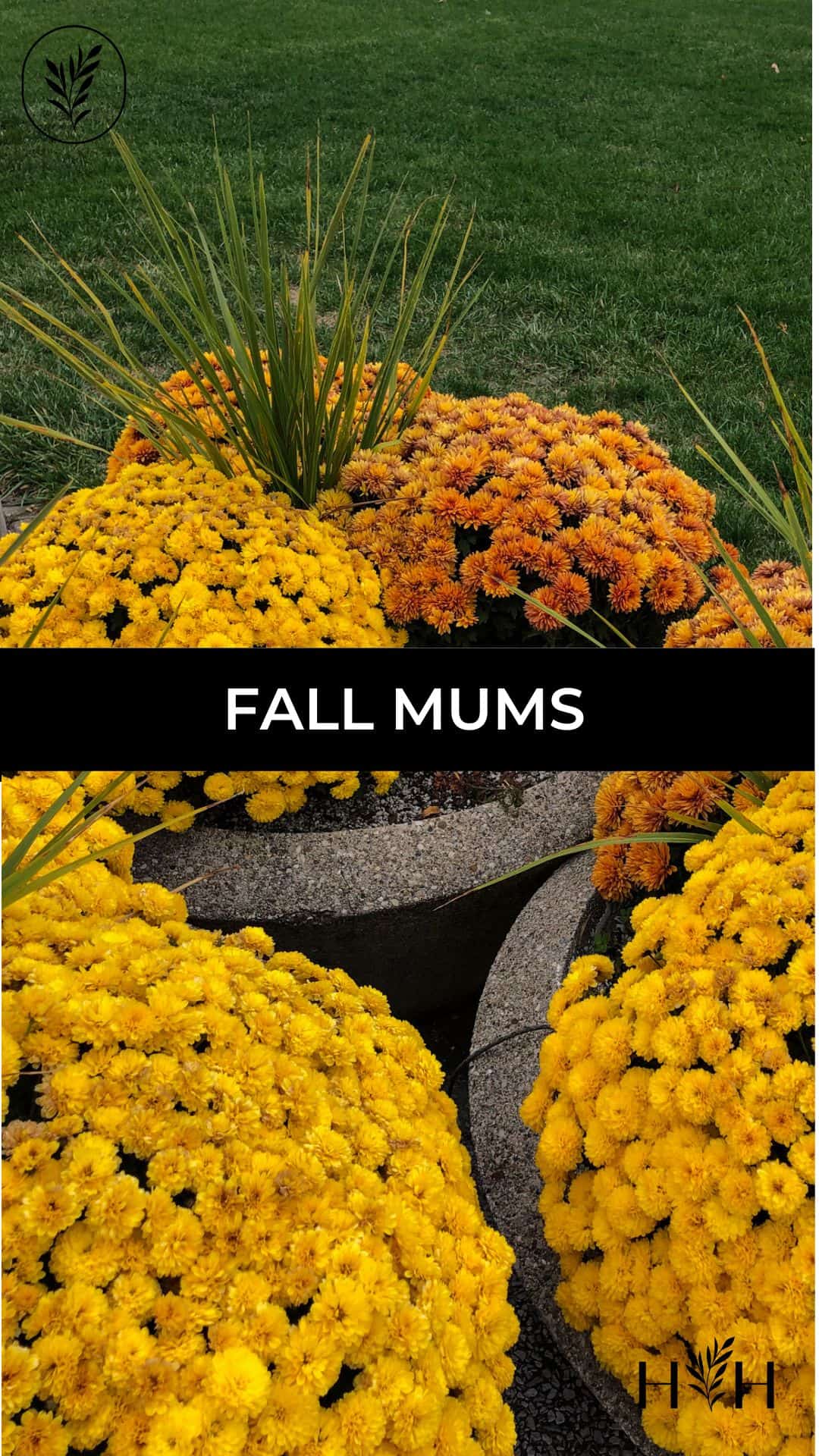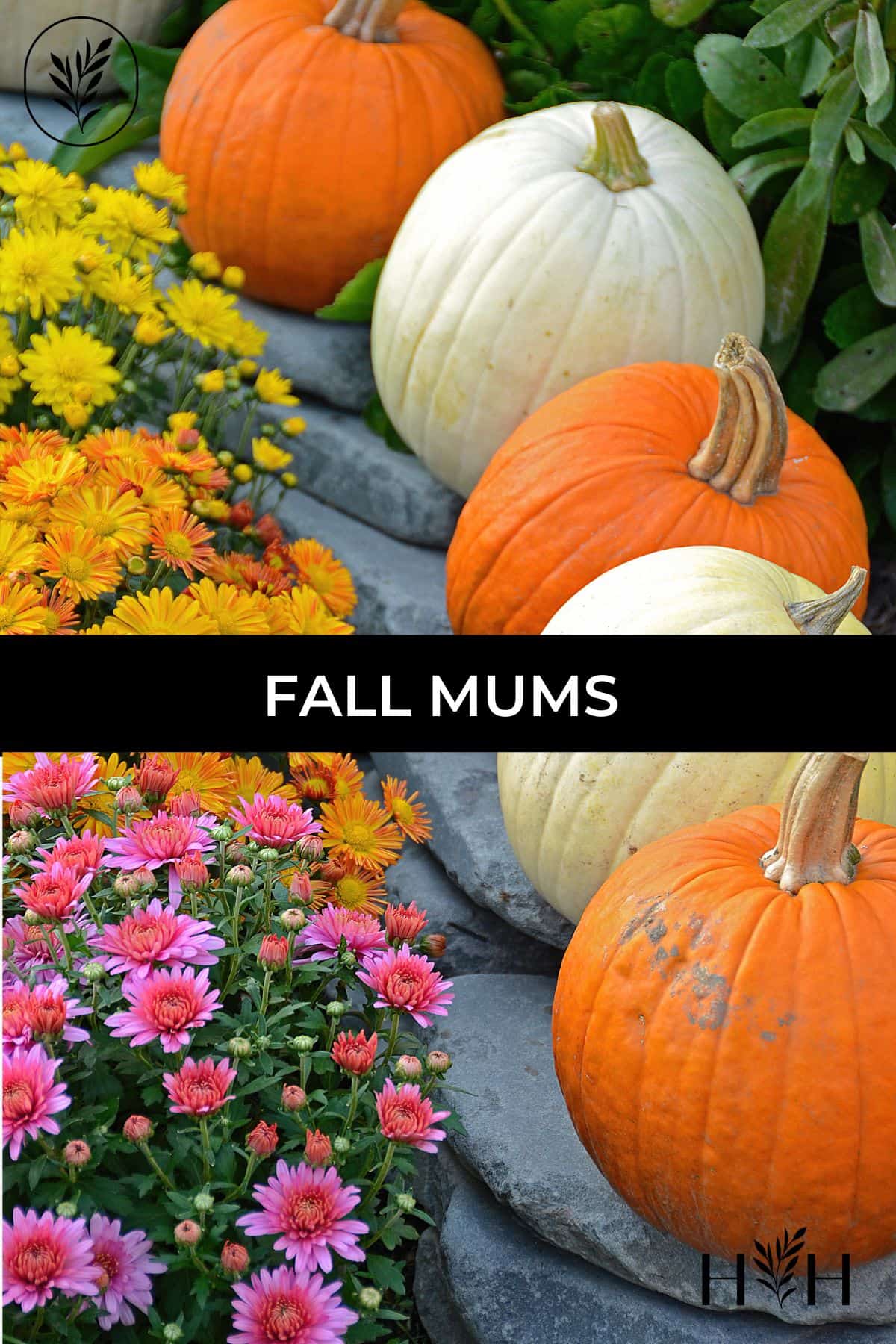The fall season is upon us, which means it’s time for those beautiful Fall Mums to start appearing on porches around town! Fall Mums come in all sorts of colors, including yellow, orange, and red. If you’ve never planted fall mums before, there are a few things you need to know before you begin. Once you know the basics of planting and maintaining them, you can have beautiful blooms every single year!
Fall Mums, or Chrysanthemums, are flowering plants in the daisy family. Modern Fall Mums tend to be quite short, producing a gorgeous sphere of showy blooms when planted in a container. Fall Mums can also be planted in the garden, where they can survive for years if planted in the springtime. Heirloom and specialty Fall Mums are particularly impressive in autumn as most other flowers have finished blooming, letting the Mums steal the show.
Read on to learn all about Fall Mums!
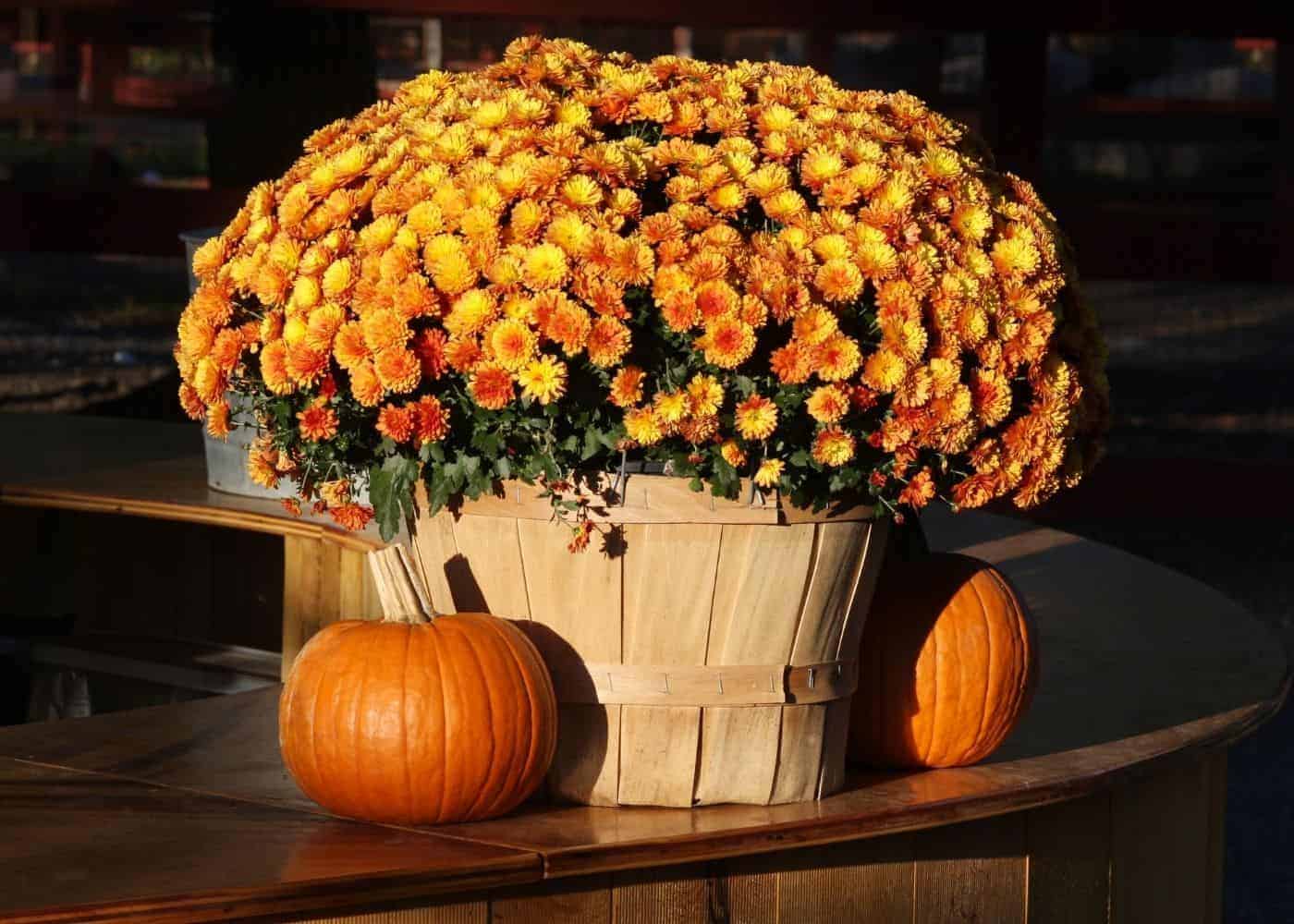
The basics to fall mums
Fall Mums, also known as Garden Chrysanthemums, are colorful flowers that give your garden an autumnal feel as the months start to get colder. Originally cultivated in China as an herb, mums were associated with having the power of life. No wonder they liven up your front porch!
Modern Fall Mums are typically hybrid plants bred to be quite short. Plants are typically cut back in early summer to promote the growth of lots of branches and masses of flower buds. Cutting the plants back in early summer also delays blooming until the fall.
Potted Fall Mums are easy to care for. Most don’t require fertilizer within the first month after purchase. They will survive quite nicely with watering 2-3 times a week in most areas. Climates with particularly hot autumn weather will have to water much more frequently (especially if the mums are in a small container in direct sunlight).
Do fall mums come back every year?
Fall Mums can come back every year as a perennial plants in good growing conditions. This starts with choosing a variety of Perennial Mum that is cold-hardy to winter temperatures in your local area. Spring-planted mums are also much more likely to survive their first winter in the ground than fall-planted mums.
Specialty nurseries ship their Fall Mum plants in the springtime so that the roots will have several months to become established in the surrounding garden soil prior to blooming. Only Mums with established root systems tend to survive over winter.
How long do fall mums last?
Fall Mums will typically bloom for 4-8 weeks in the fall. Spring-planted Fall Mums in good growing conditions will continue to bloom each autumn for many years. To keep the plants blooming at their best, divide the roots up every few years and replant the youngest, freshest roots. Cutting back the entire plant in late June each year also promotes extra blooms.
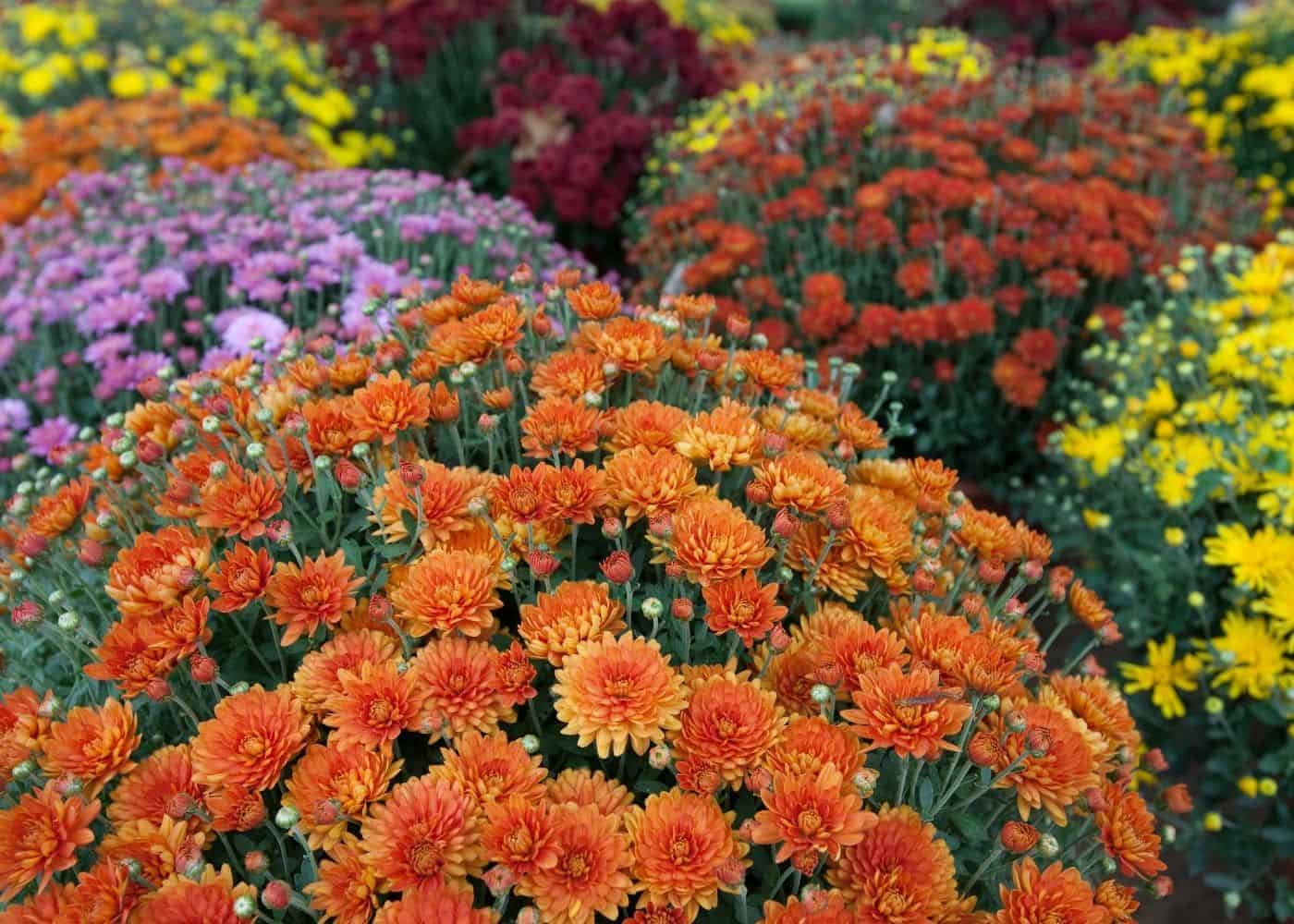
What are the best hardiness zones for fall mums?
Many types of Perennial Mums are hardy in Zones 7-9 (see the USDA Plant Hardiness Chart to find your local zone number). This includes popular brands including Wanda Mums, Paradiso Mums, and Morgana Mums. Growers in Zones 7-9 can grow these plants out in the garden year-round. Those in Zones 6 and cooler will have to overwinter the plants in containers in a cool basement or another frost-free area.
Several types of Mums are more cold-hardy than the majority. Popular low-growing border plant ‘Small Wonder’ Mums are cold-hardy in Zones 5-9. And in the coldest areas, Mammoth Mums are cold-hardy in Zones 3-9.
What is the best soil for fall mums?
The best soil for Fall Mums is well-draining soil that has access to consistent moisture. Mums will have a harder time establishing roots if the soil is too dry, which can prevent them from coming back the next year.
On the other hand, soil that is too saturated and wet can ruin the roots, preventing your mums from blooming. Aim for soil that is moist but not wet or muddy. Watch the ground after watering to make sure water is draining easily into the soil and not making puddles on the surface of the soil.
How much sunlight do mums need?
Mums need at least 6 hours of ample natural sunlight per day. However, in the summer months when the sun is beating down, mums should have slight shade (especially in the afternoon). Another thing to note is if your mums are planted near artificial lights, it can alter the timing of when your mums bloom.
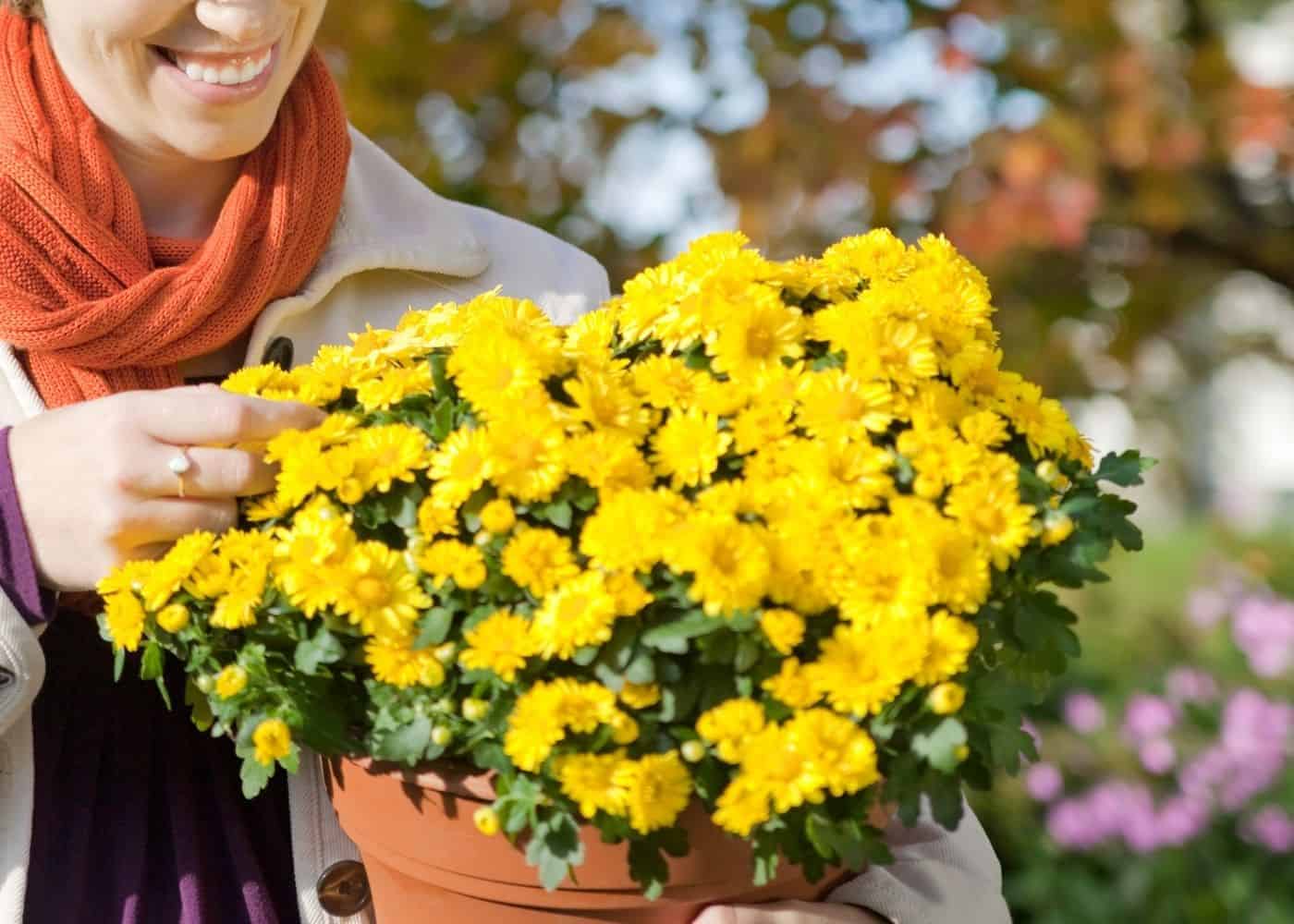
Plant care for fall mums
Caring for Fall Mums the right way will allow them to come back year after year. Mums can overwinter in the garden in climates where these plants are cold-hardy to local winter conditions. Gardeners in Zone 6 and cooler may want to overwinter Fall Mums in containers indoors unless they are sure the variety is cold-hardy to their local zone.
Watering fall mums
Mums need to be evenly watered throughout the spring, summer, and fall. Once the ground freezes in the winter, you can hold off on watering until the ground warms up again. Another watering tip is to water near the base of the plant as the thick foliage can prevent water from reaching the roots.
What should I do with my mums after they bloom?
Once your blooms die, only deadhead the dead flowers and keep the stems longer to extend bloom time. Wait to remove the dead foliage in the spring and cut the stems down to around an inch. The stems provide nutrients to the roots, allowing the flowers to come back year after year.
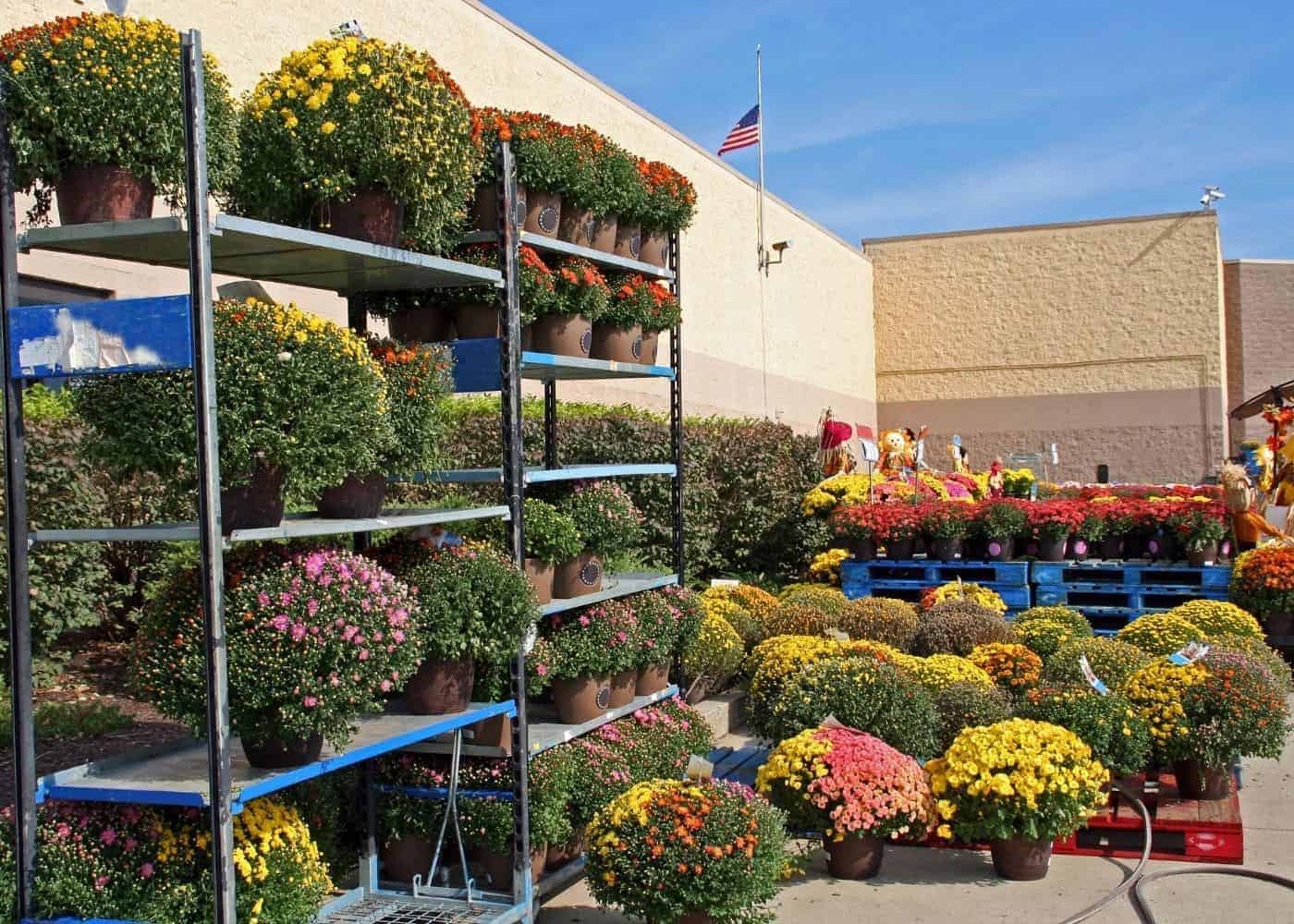
How to get fall mums to come back every year?
The easiest way to get Fall Mums to come back every year is to buy them in the spring as Perennial Mum plants. Choose a variety that’s hardy enough to survive the winter in your local area and get the plant in the garden in the springtime. Cut it back in late June or early July, before letting it go on to flower in the fall. Spring-planted Mums are much more likely to come back every year.
There are a few more things you can do to make your Fall Mums become perennial flowers. Deadheading the dead flowers in the fall, cutting back the stems in the late spring, and fertilizing your mums will help them establish roots so they come back every year.
You also want to avoid transferring your new fall mums right into the ground if you buy them in the fall. The flowers will not have enough time to develop roots by the time the ground freezes and you will most likely be left with dead flowers. To encourage regrowth year after year, keep your mums inside until the spring and then plant them. This will give them enough time to develop roots throughout the year so they have a better chance of coming back year after year.
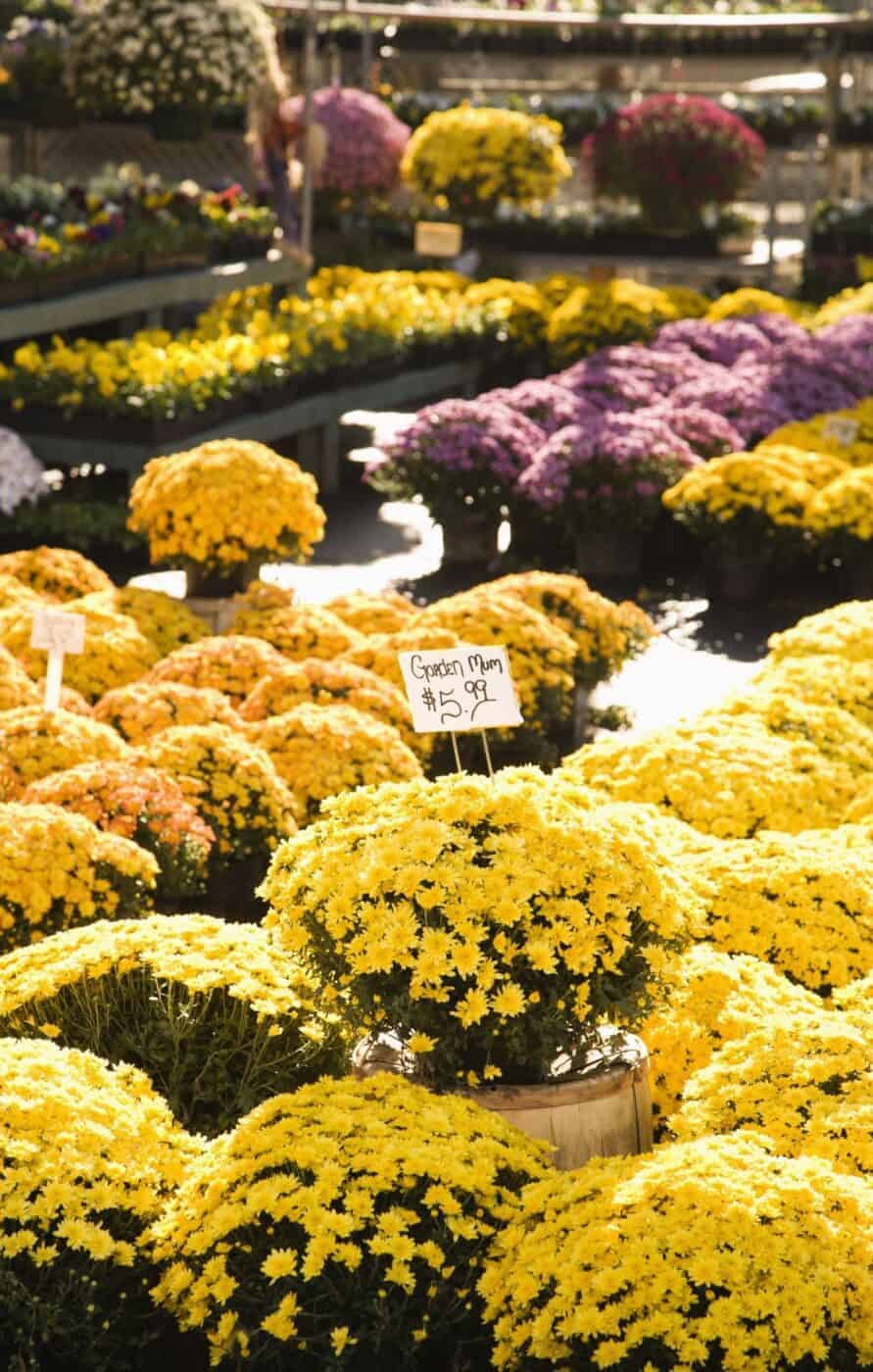
Common mistakes to avoid with fall mums
There are a few mistakes people make when planting mums that prevent them from growing back the next year. The first mistake people make is not knowing the difference between types of mums. For example, if you buy mums in pots at your local grocery store, those are generally meant to stay inside because they can’t handle the harsh winter weather (typically Zones 6 and cooler).
On the other hand, mums you buy from a gardening center or plant nurseries are more likely to be hardy mums and can withstand harsher climates. Check the label for the word “hardy” and look for the Plant Hardiness Zone listing.
Another mistake people make is not giving their mums enough sunlight. Planting your mums in the shade doesn’t give them enough nutrients to grow. Not watering your mums enough is another mistake many people make. During the summer, you might have to water your mums daily, but once the months start to cool down, only water when the soil feels dry.
The last mistake people make when taking care of mums is deadheading their mums too soon. Once your mums start to wilt, you can remove the dead flower but leave the rest of the plant alone until the spring. In the spring, cut back the stems until they are at least an inch above the ground to allow nutrients to reach the roots.
